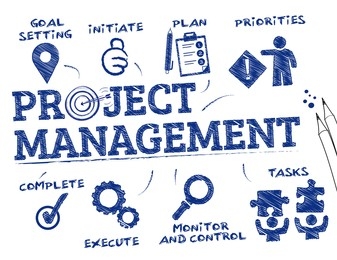To ensure the success of your project, it is important to have a **risk management strategy** in place. A risk management strategy is the process of proactively identifying, assessing, and responding to project risks before they cause any serious issues or impact the project completion timeline. Here are some strategies that can help you manage risks effectively:
- **Risk avoidance**: This involves taking steps to eliminate the risk. For example, if there is a risk of a natural disaster, you can avoid building your project in that area.
- **Risk reduction**: This involves taking steps to reduce the likelihood or impact of the risk. For example, if there is a risk of a data breach, you can implement security measures to reduce the likelihood of a breach.
- **Risk transferring**: This involves transferring the risk to another party. For example, if there is a risk of a delay in delivery, you can transfer the risk to the supplier by including a penalty clause in the contract.
- **Risk acceptance**: This involves accepting the risk and preparing a contingency plan to mitigate the impact of the risk. For example, if there is a risk of a delay in delivery, you can prepare a contingency plan to ensure that the project is not impacted by the delay.
It is important to include risk management strategies during the initial stages of the project planning process. By monitoring risks closely, you can develop mitigation plans to lessen the potential impact of risks.
Since implementing strategic risk management techniques ensures a project stays on track and succeeds, many businesses look for the “ability to manage project risks” when recruiting project managers.
What is the difference between risk avoidance and risk reduction in risk management
**Risk avoidance** and **risk reduction** are two strategies to manage risk. **Risk avoidance** involves eliminating any risk exposure that poses a potential loss, while **risk reduction** involves reducing the likelihood and severity of a possible loss.
For example, if there is a risk of a natural disaster, you can avoid building your project in that area. This is an example of **risk avoidance**. On the other hand, if there is a risk of a data breach, you can implement security measures to reduce the likelihood of a breach. This is an example of **risk reduction**.
In summary, **risk avoidance** is about eliminating the risk, while **risk reduction** is about minimizing the likelihood and impact of the risk.
What is the difference between risk transferring and risk acceptance?
**Risk transferring** and **risk acceptance** are two strategies to manage risk.
Risk transferring: involves transferring the risk to another party, while **risk acceptance** involves accepting the risk and preparing a contingency plan to mitigate the impact of the risk.
For example, if there is a risk of a delay in delivery, you can transfer the risk to the supplier by including a penalty clause in the contract. This is an example of **risk transferring**. On the other hand, if there is a risk of a delay in delivery, you can prepare a contingency plan to ensure that the project is not impacted by the delay. This is an example of **risk acceptance**.
In summary, **risk transferring** is about transferring the risk to another party, while **risk acceptance** is about accepting the risk and preparing a contingency plan to mitigate the impact of the risk.
How do you identify risks in your project?
Identifying risks is an important part of project management.
Here are some steps to help you identify risks in your project:
- **Brainstorming**: Gather a team of experts and brainstorm potential risks that could impact your project.
- **SWOT analysis**: Conduct a SWOT analysis to identify the strengths, weaknesses, opportunities, and threats associated with your project.
- **Checklist analysis**: Use a checklist to identify potential risks that could impact your project.
- **Flowchart method**: Use a flowchart to identify potential risks and their impact on your project.
- **Interviews**: Conduct interviews with stakeholders to identify potential risks that could impact your project.
- **Delphi technique**: Use the Delphi technique to gather expert opinions on potential risks that could impact your project.
- **Assumption analysis**: Identify assumptions that have been made about your project and assess the potential risks associated with those assumptions.
By identifying potential risks early on, you can develop mitigation plans to lessen the potential impact of risks. For more information on how to prevent common project risks contact us
If you need the Best Risk Management Strategy To make Your Project suitable for your business, contact us now and we will guide you with the best solution for managing your project and how to apply it. With Fig, you are with the best marketing company to help you in your professional life.
Contact us now, or follow up on our social media Facebook, LinkedIn, Instagram



